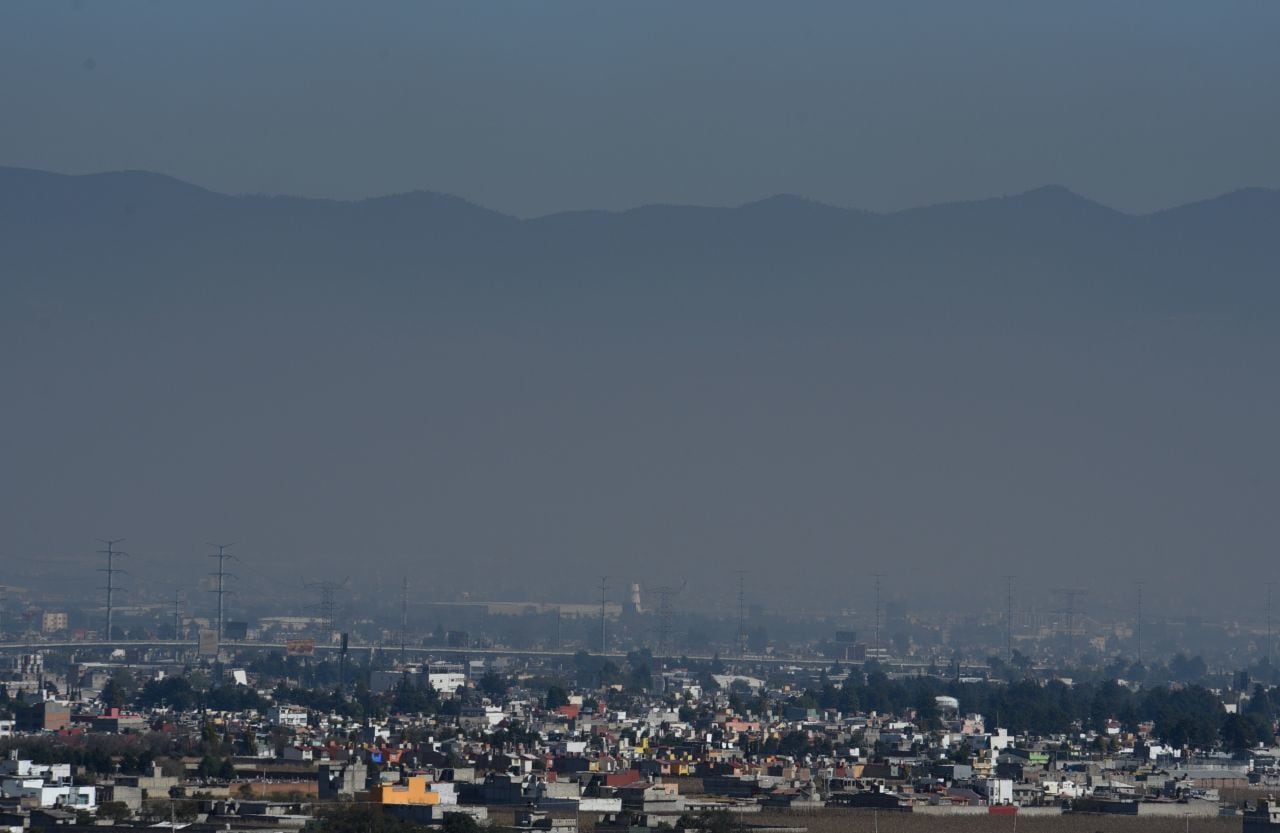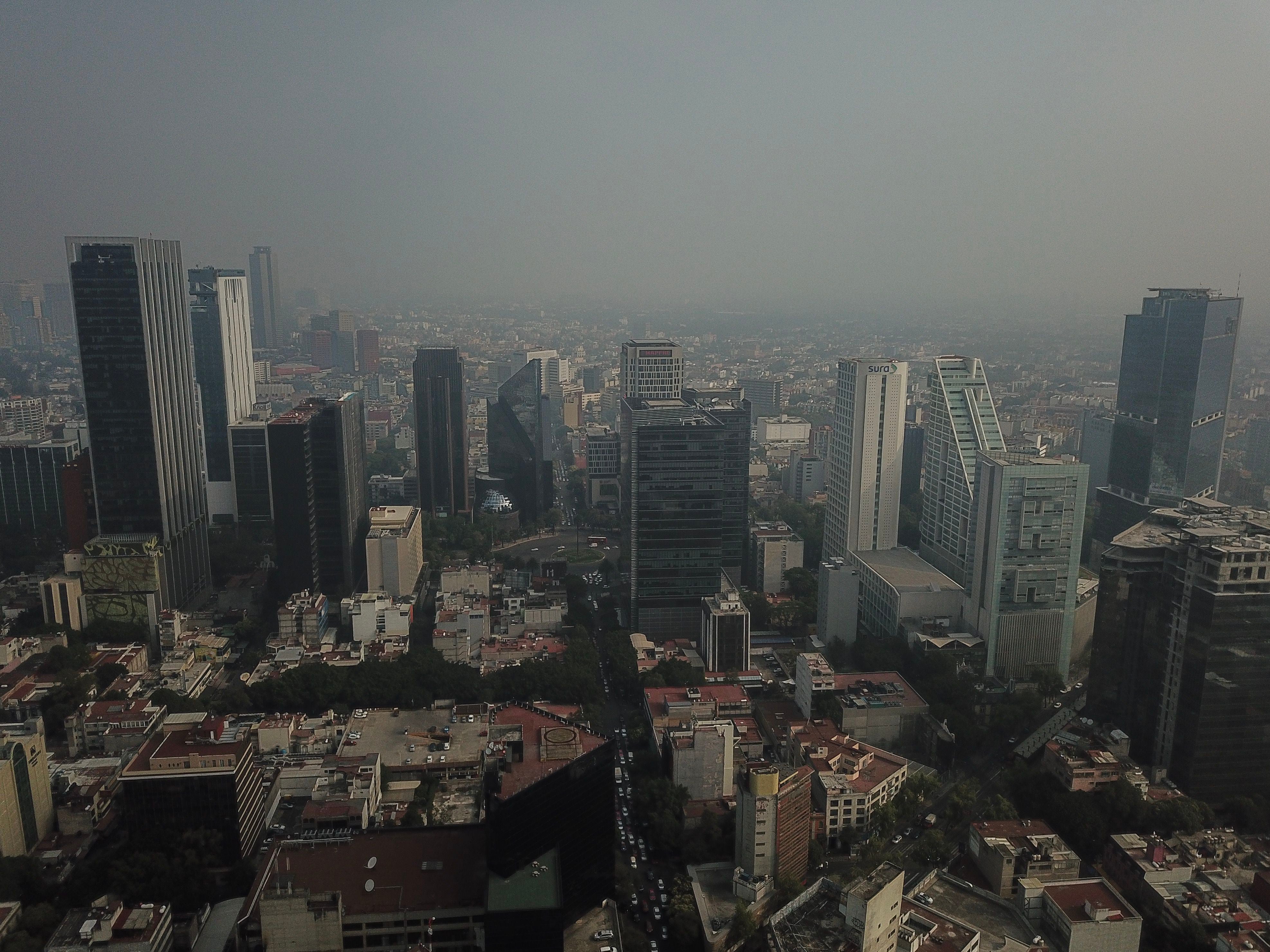
Last Tuesday, due to the high ozone concentrations of 168 ppb and 156 ppb, in Santa Fe and Merced, respectively, located in the Cuajimalpa and Cuauhtémoc mayors, the Environmental Commission of the Megapolis (CAme) activated the Phase 1 of the Ozone Environmental Contingency.
This measure was taken by CaME, after detecting the presence of weak wind and intense radiation, which increased the formation of combined ozone towards the southwestern area of the Valley of Mexico.
“This is due to the influence of a high-pressure system on the ZMVM, which strengthened during the day, increasing atmospheric stability, the presence of weak wind and the incidence of intense solar radiation that favored the formation of ozone combined with the transport of pollutants to the area. Southwest of the Valley of Mexico”, was detailed in a statement issued by the agency.
For this reason, on Tuesday, Phase 1 was activated, with the aim of reducing the population's exposure to polluted air and the risk of damage to their health.
In the Valley of Mexico, there have been several occasions when environmental contingency has been declared, due to the high levels of pollution that occur in the area. This can be caused by various causes, for example, fires, high traffic of cars, and even burning pyrotechnics.

The first environmental contingency recorded in the Metropolitan Area of the Valley of Mexico (ZMVM) was decreed 30 years ago, in March 1992. On that occasion, ozone levels reached 398 IMECA (Metropolitan Air Quality Index) points, when the limit was 250 points.
At that time in the early 1990s, some official vehicles were also banned from circulating, classes were suspended at the basic level of education, and there were some restrictions for companies.
This is also considered to be the longest environmental contingency in the country's capital. On 19 March of that same year, a few days after the first environmental contingency was declared in the ZMVM, 293 IMECA points were recorded.
The next day, Phase 2 was activated, when pollution levels soared to 360 points. This contingency lasted from March 20 to April 10 of that year. At the time of deactivating the alert, there were 187 IMECA points.
According to that year's Annual Air Quality Report, Phase 2, activated on March 20, was withdrawn on March 22, “noting that Phase 1 continues to operate permanently.” Since the beginning of the contingency, on that occasion, the program Hoy No Circula was activated, “applied to two days including Saturday and Sunday.

The most affected area of the capital in March 1992 was the southwest, where a maximum of 398 IMECA points were recorded. In the northwest, the highest record in that year was 267 points; in the northeast 208; in the center 298 and in the southeast it was 195 points.
That March, four contingencies were activated at various times of the month. The first was on day six, when 276 IMECA points were recorded, and ended the next day. Subsequently, on the 16th, the points rose to 398, the highest level of pollution so far. The contingency was lifted the next day, with 151 points.
The government of Mexico City has kept a record of air pollution levels since 1988. A year earlier, in 1987, some national media reported the death of birds due to air pollution, especially in the southeast of the country.
That same year, the secretary of Urban Development and Ecology of the Federal District, Manuel Camacho Solis, accepted that the death of birds was due to environmental pollution, according to a publication by El Gráfico.
The year with the highest number of contingency records is 1993, with 12, where the highest level was 289 IMECA points. The next year with the most alerts was 2016, with 10 contingencies with levels between 151 and 194 points.
KEEP READING:
Últimas Noticias
Debanhi Escobar: they secured the motel where she was found lifeless in a cistern
Members of the Specialized Prosecutor's Office in Nuevo León secured the Nueva Castilla Motel as part of the investigations into the case

The oldest person in the world died at the age of 119
Kane Tanaka lived in Japan. She was born six months earlier than George Orwell, the same year that the Wright brothers first flew, and Marie Curie became the first woman to win a Nobel Prize

Macabre find in CDMX: they left a body bagged and tied in a taxi
The body was left in the back seats of the car. It was covered with black bags and tied with industrial tape
The eagles of America will face Manchester City in a duel of legends. Here are the details
The top Mexican football champion will play a match with Pep Guardiola's squad in the Lone Star Cup

Why is it good to bring dogs out to know the world when they are puppies
A so-called protection against the spread of diseases threatens the integral development of dogs




